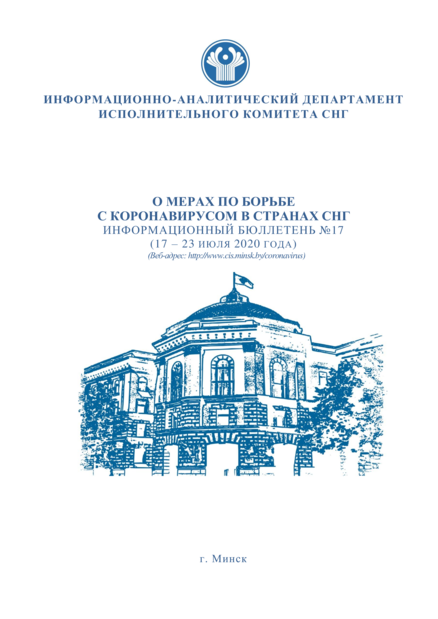–û –º–µ—Ä–∞—Ö –ø–æ –±–æ—Ä—å–±–µ —Å –∫–æ—Ä–æ–Ω–∞–≤–∏—Ä—É—Å–æ–º –≤ —Å—Ç—Ä–∞–Ω–∞—Ö –°–ù–ì –∏–Ω—Ñ–æ—Ä–º–∞—Ü–∏–æ–Ω–Ω—ã–π–µ –±—é–ª–ª–µ—Ç–µ–Ω–∏
–ú–µ—Ä—ã –ø–æ –±–æ—Ä—å–±–µ —Å —ç–ø–∏–¥–µ–º–∏–µ–π
–¢–µ–∫—É—â–∞—è –∞–∫—Ç—É–∞–ª–∏–∑–∞—Ü–∏—è –º–µ—Ä –ø–æ –±–æ—Ä—å–±–µ —Å –ö–û–í–ò–î-19 –≤ –°–ù–ì
Information bulletins on measures to combat coronavirus in CIS countries


